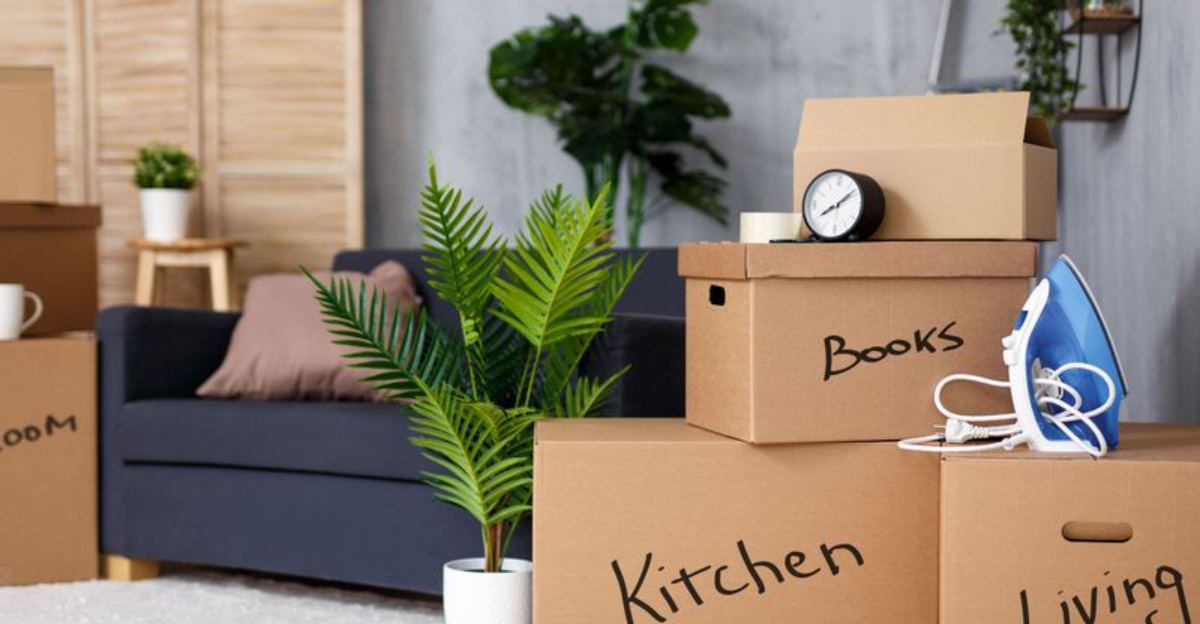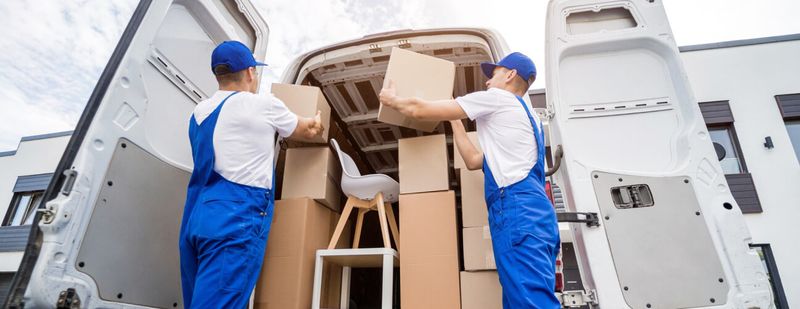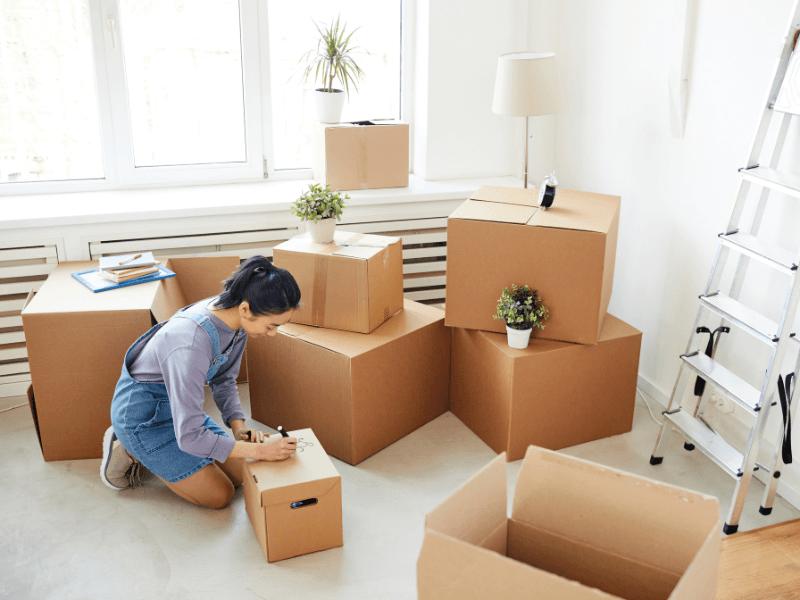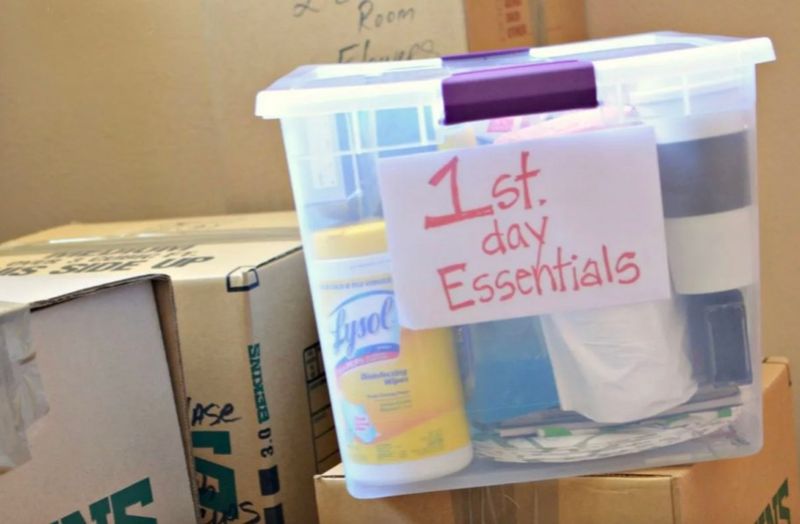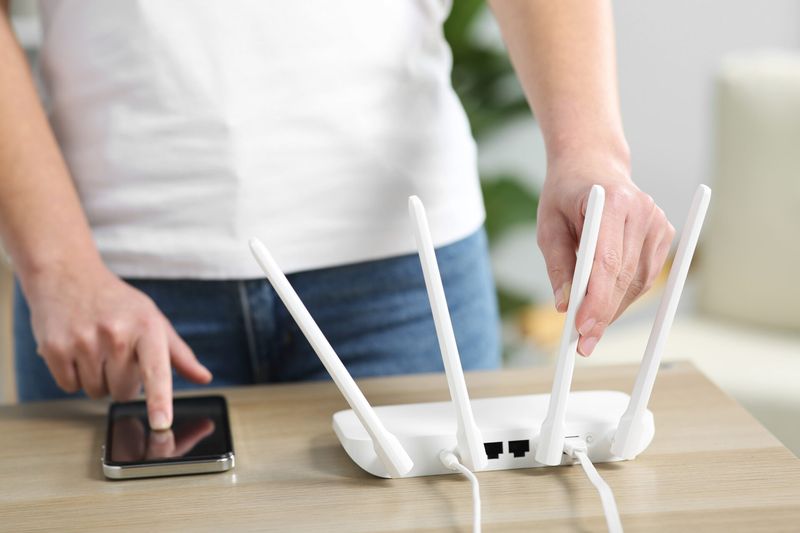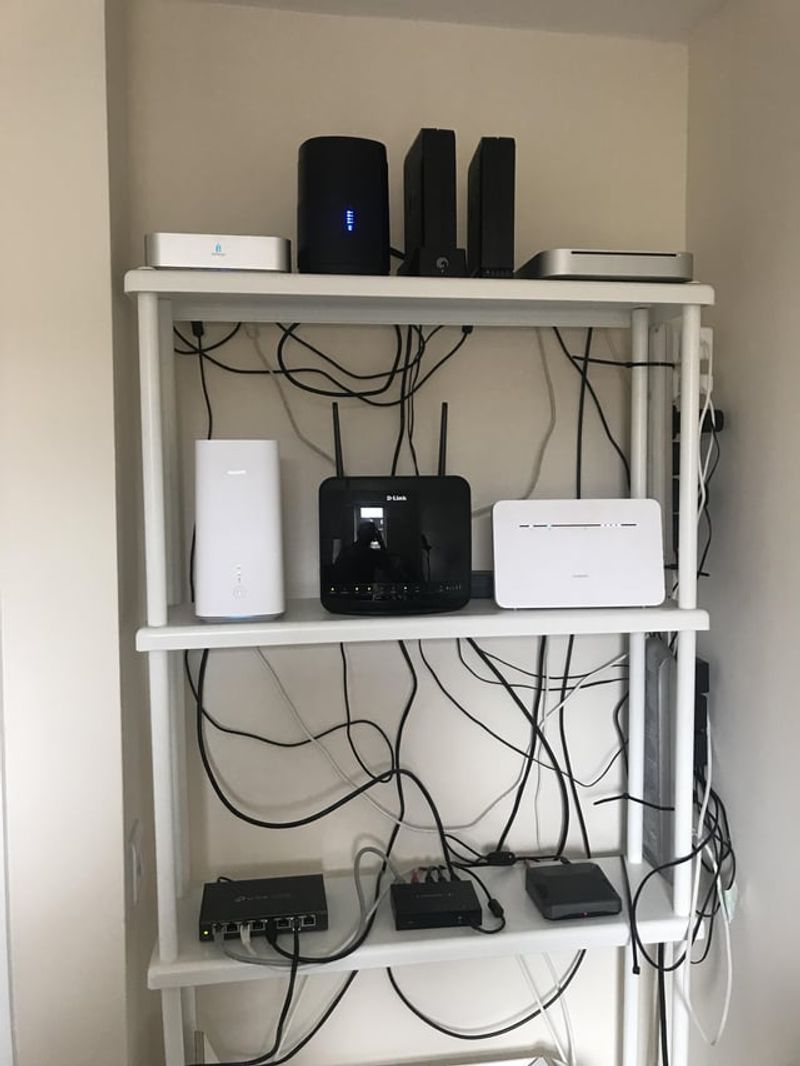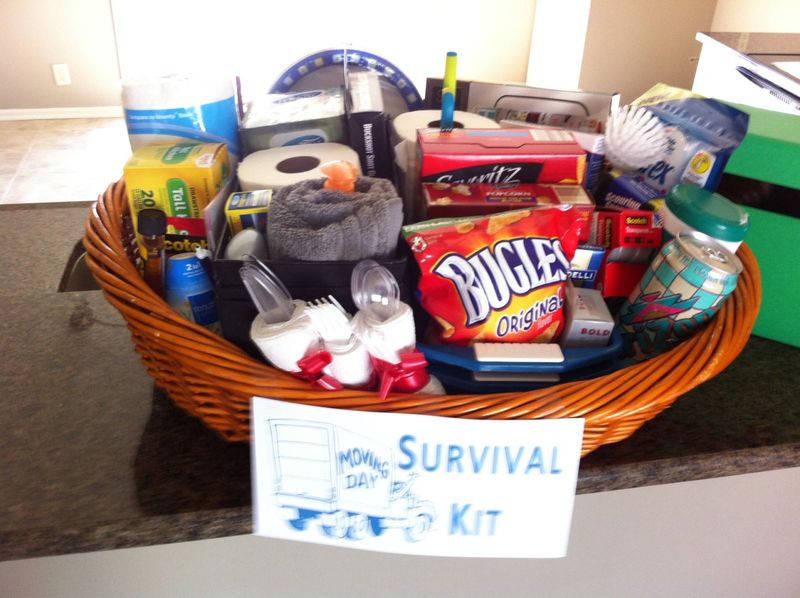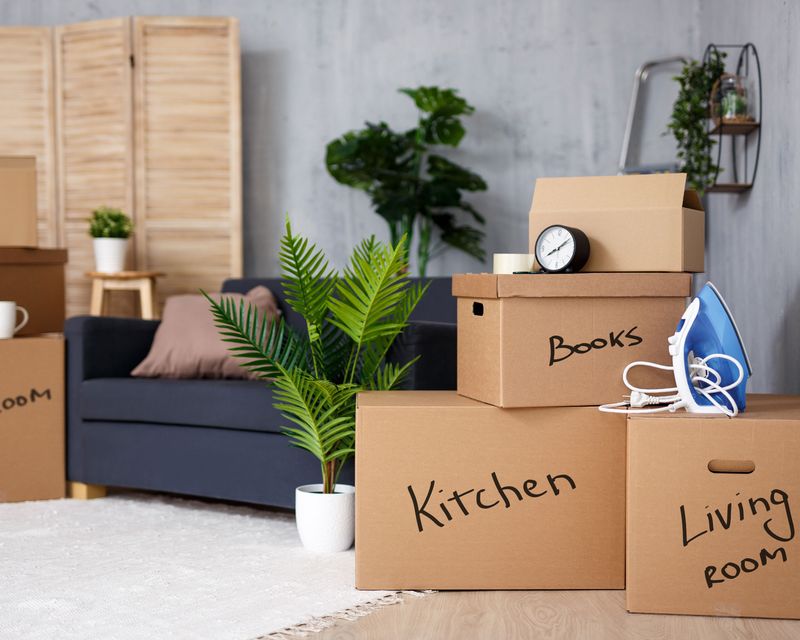19 Things You Must Do When Moving House
Moving to a new house can feel like a giant puzzle with too many pieces. From sorting through years of stuff to making sure your cat doesn’t get left behind, there’s a lot to remember!
This guide will walk you through the must-do tasks that’ll make your move smoother, less stressful, and maybe even a bit fun.
Grab a cup of coffee and let’s get your move organized!
1. Create a Moving Checklist
Ever tried to juggle fifteen tasks at once? That’s what moving feels like without a checklist! Start by writing down everything you need to do, from calling utility companies to buying packing tape.
Breaking the giant task of moving into smaller, manageable chunks helps prevent that overwhelming feeling. Plus, there’s something incredibly satisfying about crossing items off your list as you complete them.
2. Declutter Before Packing
Why haul stuff you don’t need to your new place? Before boxing anything up, sort through your belongings and create three piles: keep, donate, and trash.
Those pants you haven’t worn in five years? That broken toaster you keep meaning to fix? Time to let them go! Not only will decluttering make packing easier, but you’ll also start fresh in your new home without unnecessary baggage.
3. Research Professional Movers
Thinking about hiring pros to do the heavy lifting? Smart move! Start researching moving companies at least a month before your moving date.
Ask friends for recommendations, read online reviews, and get quotes from at least three different companies. Don’t automatically go with the cheapest option – look for movers with insurance, good reviews, and clear pricing. Your grandmother’s antique china will thank you for choosing carefully!
4. Gather Packing Supplies
Running out of tape mid-packing is no fun! Stock up on essentials before you start: boxes in various sizes, packing tape, bubble wrap, markers for labeling, and don’t forget those handy wardrobe boxes for clothes.
Check local stores or online marketplace groups for free boxes – grocery stores and liquor shops often have sturdy ones they’re happy to give away. Having everything on hand makes the packing process flow much more smoothly.
5. Pack Room by Room
Randomly throwing items into boxes is a recipe for moving day chaos! Instead, tackle one room at a time, completely finishing it before moving to the next.
Start with rooms you use less frequently, like the guest bedroom or formal dining area. Label each box with both the room it belongs to and a brief description of contents. Future you will be incredibly grateful when you’re looking for the coffee maker at 6 AM in your new place!
6. Create an Essentials Box
Imagine arriving at your new home exhausted, only to realize you can’t find your toothbrush or coffee maker! Avoid this nightmare by packing a clearly marked “First Night” box with essentials.
Include toiletries, medication, phone chargers, a change of clothes, basic kitchen items, and bedding. Keep this box with you rather than on the moving truck. Having immediate access to necessities will make your first night much more comfortable.
7. Transfer Utilities and Services
Nobody wants to shower in the dark on their first morning in a new home! Contact utility providers at both your old and new addresses about two weeks before moving day.
Schedule disconnection at your old place for the day after you move out. Meanwhile, arrange for electricity, water, gas, internet, and other services to be active at your new home before you arrive. Many providers can schedule these transfers online, saving you hours of phone calls.
8. Take Photos of Electronics Setup
Faced with a tangle of unlabeled cords, setting up your TV and sound system can feel like defusing a bomb! Before disconnecting any electronics, snap photos of how everything is connected.
These visual references will save you hours of frustration when reassembling your entertainment center or home office. For extra organization points, use colored tape to label cords and their corresponding ports. Your future self will be amazed at your foresight!
9. Update Your Address for Mail Forwarding
Mail limbo is real! Visit your local post office or go online to set up mail forwarding from your old address to your new one.
This service typically lasts for six months, giving you time to update your address with various companies and services. While most important mail will be forwarded, some types of mail might not be, so it’s still crucial to update your address directly with important senders.
10. Clean Your New Home Before Moving In
Nothing beats the feeling of moving into a sparkling clean home! If possible, get the keys a day early and give your new place a thorough cleaning before your belongings arrive.
Focus on kitchens and bathrooms first, then tackle floors and surfaces throughout the house. It’s much easier to clean empty rooms than to work around furniture and boxes. Consider hiring professionals if you’re short on time or energy.
11. Take Measurements of Your New Space
Discovering your couch won’t fit through the door on moving day is a special kind of heartbreak! Avoid furniture fiascos by measuring doorways, stairwells, and room dimensions at your new place before moving day.
Bring a tape measure during your final walk-through or ask your real estate agent for floor plans. Having these measurements handy ensures your furniture will fit in its intended spaces and through all necessary passageways.
12. Arrange for Pet and Child Care on Moving Day
Curious toddlers and nervous pets can make moving day twice as challenging! Arrange for friends or family to watch your children and pets during the most hectic hours of your move.
If that’s not possible, designate a safe room at both locations where they can stay out of the way. Pack a special bag with toys, treats, and comfort items to keep them occupied and calm during the transition.
13. Take Photos of Your Old Place After Moving Out
Rental deposit disputes can put a damper on moving excitement! After completely emptying and cleaning your old place, take detailed photos of every room, including inside appliances and any existing damage.
These photos serve as proof of the condition you left the property in, protecting you from unfair deductions from your security deposit. Date-stamp the photos if possible, and keep them until your deposit has been returned in full.
14. Prepare a Moving Day Survival Kit
Moving day marathons require proper fuel! Pack a separate bag with snacks, water bottles, pain relievers, band-aids for paper cuts, and cash for tipping movers or ordering pizza.
Don’t forget chargers, important documents, and a change of clothes. Keep this bag in your personal vehicle rather than the moving truck. Having these essentials easily accessible will help you handle the inevitable minor emergencies of moving day.
15. Label Boxes by Priority
Facing a mountain of identical boxes in your new home can be overwhelming! Beyond labeling boxes by room, create a priority system using colored stickers or bold markings.
Red could mean “unpack first,” yellow for “soon but not urgent,” and green for “whenever you get to it.” This system helps you focus on essential items first, like kitchen necessities and bedding, rather than unpacking books when you should be setting up your shower curtain.
16. Check Smoke Detectors and Change Locks
Safety first in your new castle! As soon as you move in, test all smoke and carbon monoxide detectors to ensure they’re working properly. Replace batteries if needed.
Additionally, change the locks on all exterior doors. You never know how many copies of the keys might be floating around from previous owners or tenants. These simple steps provide peace of mind and protection for your family and belongings.
17. Locate Important Features in Your New Home
Knowing where to find the circuit breaker at 11 PM can be a lifesaver! Shortly after moving in, locate and label your electrical panel, water shut-off valve, gas shut-off, and any other emergency controls.
Take a few minutes to understand how your home’s heating and cooling systems work. Familiarizing yourself with these features before you need them urgently will save you stress and potentially prevent damage during emergencies.
18. Meet Your New Neighbors
Friendly neighbors can be your best resource in a new area! Once you’re somewhat settled, take a walk around the neighborhood and introduce yourself to the people living nearby.
They can provide valuable information about local services, garbage collection schedules, and neighborhood quirks. Consider bringing a small treat or just a friendly smile. Building these relationships early makes your new house feel more like home.
19. Explore Your New Neighborhood
Adventure awaits just outside your new front door! Set aside time during your first week to explore your new surroundings – locate the nearest grocery store, pharmacy, gas station, and hospital.
Find the quickest route to work and scope out local restaurants and coffee shops. Getting familiar with your neighborhood helps establish routines and creates a sense of belonging. Plus, discovering that perfect little bakery around the corner might become the highlight of your new location!

